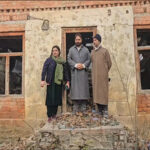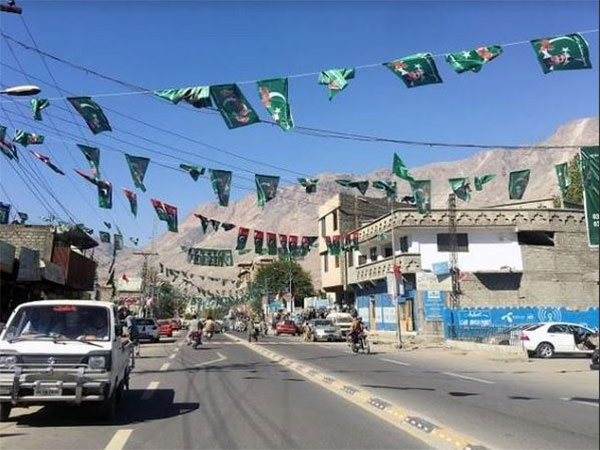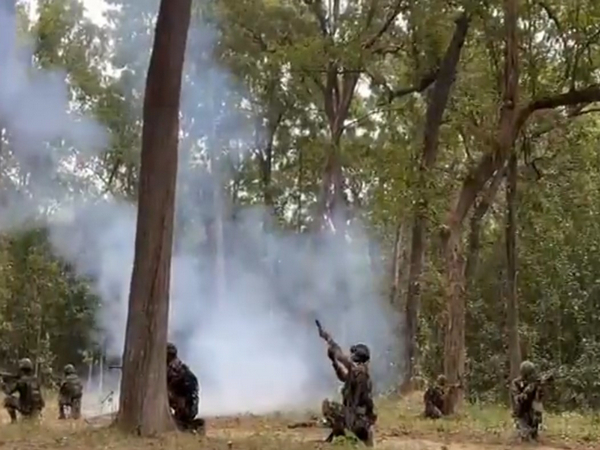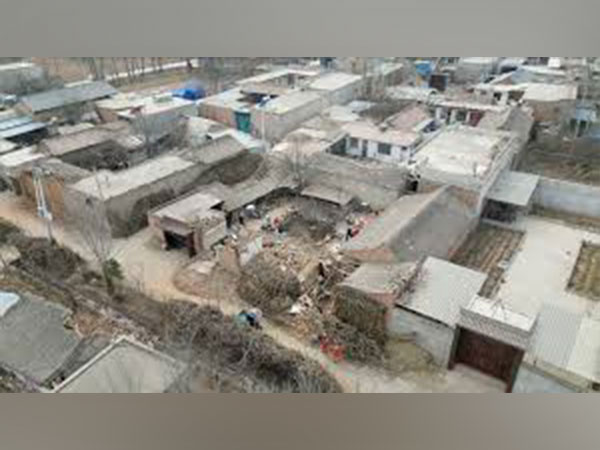
Security personnel frisk a man in the southern border town of Spin Boldak, near the Pakistani border, April 15, 2007. Afghan and NATO forces killed at least 10 Taliban in an overnight assault in eastern Afghanistan, hours before a suicide bomber killed four people on Sunday as violence rises after the annual winter lull. REUTERS/Saeed Ali Achakzai (PAKISTAN) - GM1DVAWOGDAA
Kabul [Afghanistan], September 17 (ANI): With Pakistan playing the ball with the Taliban, the refugee crisis in Afghanistan post-Taliban threatens to prolong and needs continued focus.
Fabien Baussart, in a blog post in The Times of Israel, said that with solid action in the form of pressures on Kabul and Islamabad authorities should work to resolve it and not try to suppress it.
A humanitarian crisis of gigantic proportions is unfolding in the landlocked nation even as a shocked and surprised world community struggles to come to terms with the country’s takeover by the Taliban.
It is accentuated because the new rulers, while giving verbal assurances of safety, are hunting down people who oppose them, on the streets and from their homes, says Baussart.
An equally big contributor to the crisis is the role of Pakistan that has the largest border with Afghanistan, but will not open it to the fleeing Afghans.
The near-complete fencing of the border is now being compounded by closing the check-posts and physically deporting those who manage to cross over.
The new refugees are clearly forced and coerced, not allowed to stay even overnight and are handed over across to the Afghan border authorities, reported The Times of Israel.
Pakistan‘s Interior Minister Sheikh Rashid on September 5 said in Quetta that there were no refugee camps and none was being planned.
Three days later, Dawn newspaper reported from the same city that 200 Afghans – families with children – who crossed over from Spin Boldak and Chaman were deported back and the Afghan authorities, in turn, drove them back into the interior.
This is “unlawful forced mass return,” according to Human Rights Watch. There is no surprise in this course of action that is bound to be repeated as Afghans desperately try to flee their country.
That part of the Afghan-Pak border was under the Taliban control long before they took Kabul, and elaborate preparations were made well in advance to mutual advantage.
The Pakistan authorities had made clear assertions in that regard since May this year, even as the Taliban‘s military campaign gained momentum, says Baussart.
Dr Olszewska of the HRW has noted that “the current partial border closure is two-way, as the Taliban have closed the border on their side in Spin Boldak to pressure Pakistan to ease some of its restrictions. It is vital that the border is opened for humanitarian aid to enter Afghanistan and for people wishing to leave to be able to do so.”
But Pakistan has been unrelenting and has made clear its plans to not add to the estimated 300,000 Afghan nationals staying there for long. The government has officially cited ‘security’ concerns while analysts and media reports indicate fears of an influx of drugs and arms, besides humans caused by the conflict in Afghanistan, says Baussart.
But humanitarian crisis it remains, whatever the concerns that are echoed, with much less intensity though, along Afghanistan‘s borders with Iran and Central Asia. Pakistan remains the principal hub.
The Crisis Response Journal (CRJ), based in Britain, notes: “the truth is that the country’s refugee issue is neither new nor recent. The displacement of Afghans has been happening piece by piece for decades now. According to UNHCR numbers, this year alone, more than 400,000 Afghans have been displaced from their homes, fleeing as the terror outfit claimed territories under its control, adding to the 2.9 million who were already internally displaced by the end of 2020, with the overall numbers coming up to five million.”
When the Taliban entered Kabul on August 15, the nation’s capital received a whopping 120,000 people. Many stormed the airport trying to flee, with or without visas and other documents, and some became victims of new authorities’ firing and terror attacks by the Islamic State-Khorasan.
After witnessing these horrific scenes, the world community seems to have withdrawn focus on the crisis, perhaps, without bothering to go into who the refugees are and their fears, says Baussart. (ANI)


















